Basic Knots with Animation and Usage
Basic Scout KnotsThese are the eight basic knots that all scouts should be able to tie without even thinking twice. Click any image for an animation of the knot Square (or Reef) Knot Used to bind a package or bundle. Click image for animation Sheet Bend Used to join two ropes together, ...

Bends Midspan Sheet Bend
Midspan Sheet Bend Imagine if you have nothing but two parallel ropes each a mile long, and you're at the midspan of them. The point is, you don't have access to any of the four ends. How do you join the two ropes at the midspan without using a lot of ...

Bends Zeppelin Bend
Zeppelin BendAlso known as the Rosendahl Bend, it's perhaps the best way to connect two ropes that there is. It's absolutely secure and jerk-resistant in all materials and is perfectly symmetric. It's also remarkably easy to untie after use, even when wet. If you're trying to learn it, think ...
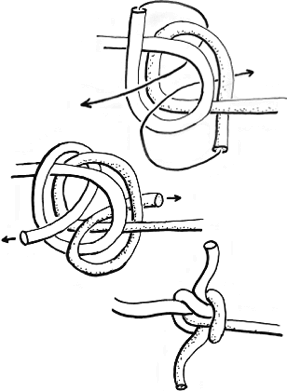
Hitches Midshipmans or Tautline Hitch
Midshipman's Hitch or Tautline HitchThis hitch is really just an adjustable loop used for non-critical applications where you need to adjust the size of a loop to apply tension to guy lines, like on your tent. After you tie it, grab the bulk of the knot and slide it ...

Hitches Pile Hitch Double Pile Hitch
Pile HitchThis is a convenient hitch when you have access to the end of the post. If you need a more secure hitch, you can make it a Double Pile Hitch by spiraling down the post an extra 360 degrees with the bight of rope before throwing the bight ...
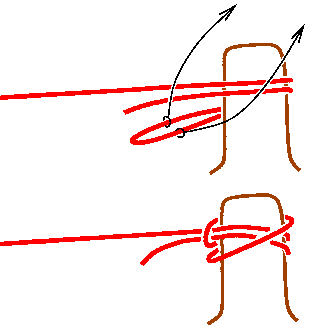
Hitches Sailors Hitch Gripping Sailors Hitch
Draws up without having to work the hitch snug to form a strong, secure hitch that will not jam. It may be used as a way to tie a smaller rope to a very large rope. (The smaller rope should pull left when tied as shown here.) Push a bight ...
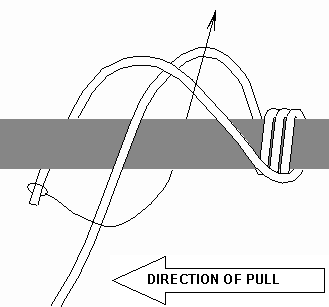
Hitches Slipped Buntline Hitch
Slipped Buntline HitchAlthough a standard buntline hitch has a terrible tendency to jam up, the slipped form of the buntline hitch helps alleviate this problem and thereby makes it more useful. As shown, just push a bight of rope through the final tuck of what would have been a buntline ...
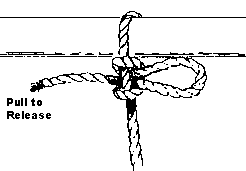
Hitches Timber Hitch
Timber HitchThis is one of the few classical hitches that is truly useful and reliable. Its security is admirable and it always casts off without trouble after use. Just remember that a true Timber Hitch must have at least three tucks contacting against the object. Beware of using this ...
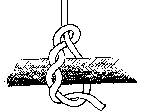
Larks Loop and Double Larks Loop
Lark's Loop Double Lark's LoopAn easy-to-remember end loop that can be tied around or through an object. It appears more secure than a bowline in slippery rope. It's easier to tie than re-threading a figure-8 loop as required for an end loop and won't jam up like a figure-8 ...
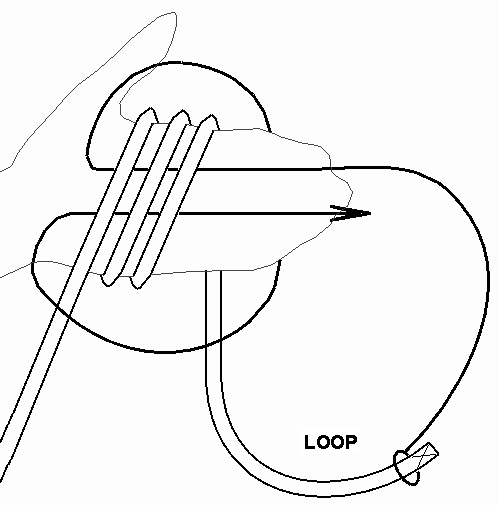
Loops Nooses Butterfly Loop or Linemans Loop
Butterfly Loop or Lineman's LoopThis is my favorite loop knot tied in the bight. It's secure, strong, approximately symmetrical, easy to tie, and never jams, even when wet. There are actually two good ways to tie it, and the easier way is shown here. The other way works better when ...

Loops Nooses Slippery 8 Loop
Slippery 8 LoopThis adjustable loop was described to me by Dave Poston and probably was discovered by him. It has surprising security for an adjustable loop and has the unique feature that the loop cannot possibly contract under tension should extraordinary circumstances cause it to slip. One extraordinary circumstance ...

Loops Nooses The Bowline
The Bowline If you just need a loop, use a Butterfly Loop. But if the task isn’t critical, and you need to thread the loop around or through something before closing the loop, you can use the bowline. If the job needs a truly secure end loop, try the Water Bowline ...

Loops Nooses Water Bowline
Water BowlineThis is a very secure loop probably developed for use in an environment that make security properties for most knots change dramatically... underwater. Although shown separated for clarity, draw the two half-hitches snug together before using. Some theorize that its form also prevents jamming in wet line. If you're ...

Other Storing Your Rope
Storing Your Rope (2 Methods)The first of two methods I'll describe is shown above. It goes by many different names including an Electrician's Braid and a Double Monkey Chain. Parachutists use such a method to keep their chute cords from tangling. Double up the rope by grasping the two ...
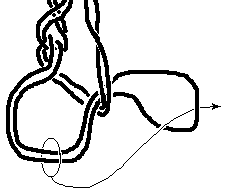
Other The Boa The Constrictor Knot
The Boa Knot & The Constrictor KnotThe Boa and the Constrictor are both excellent binding knots. They are not intended to be hitches nor would I recommend it because they are hard to untie and generally don't perform well as hitches.Here's how to make a Boa Knot: Step 1: Make ...
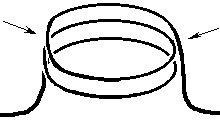
Poldo Tackle
Poldo TackleAn interesting contrivance that allows you to instantly apply and release tension on the line. Push the loops together to slacken, and pull the loops away from each other to tension the line. The diagram is shown very loose for clarity. Use any loop you wish for the ones ...

The Power of Friction
The Power of FrictionThe frictional resistance force, shown above, varies exponentially with the number of turns around the fixed round object and exponentially with the coefficient of friction. What that means is that given a big enough rope and a strong enough round beam, a child could gently lower a ...
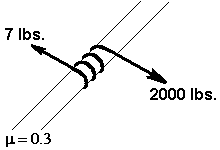
Tip for untying jammed knots
How to Untie Tight KnotsAre you looking for an easier way to untie jammed-up knots? One way is to quickly twist the parts of the rope just outside the knot back and forth as you push in slack. The reason this works is because of the phenomenon of compound sliding. ...
